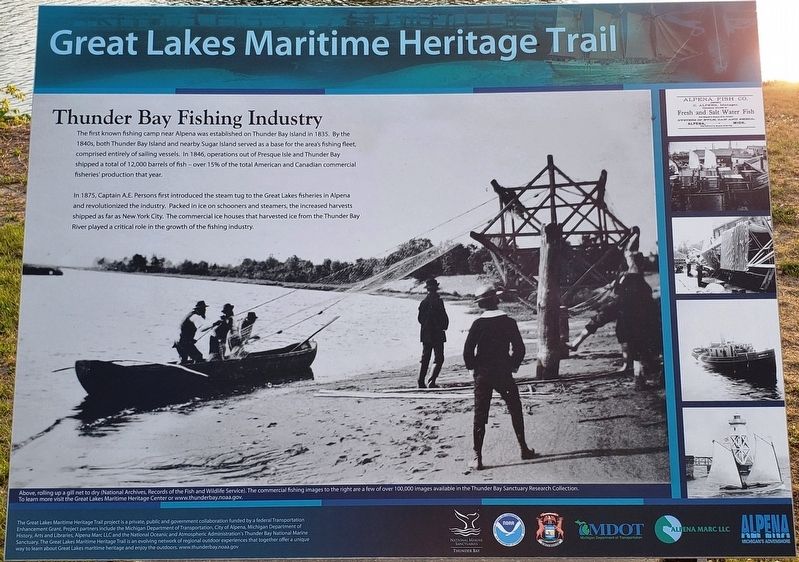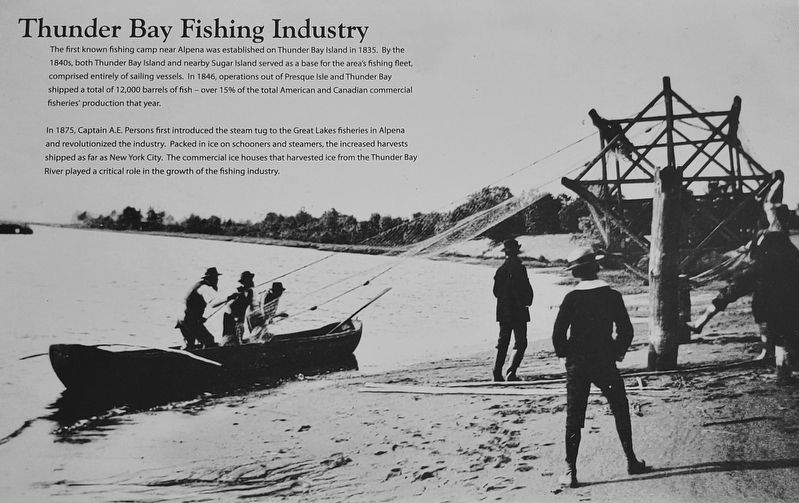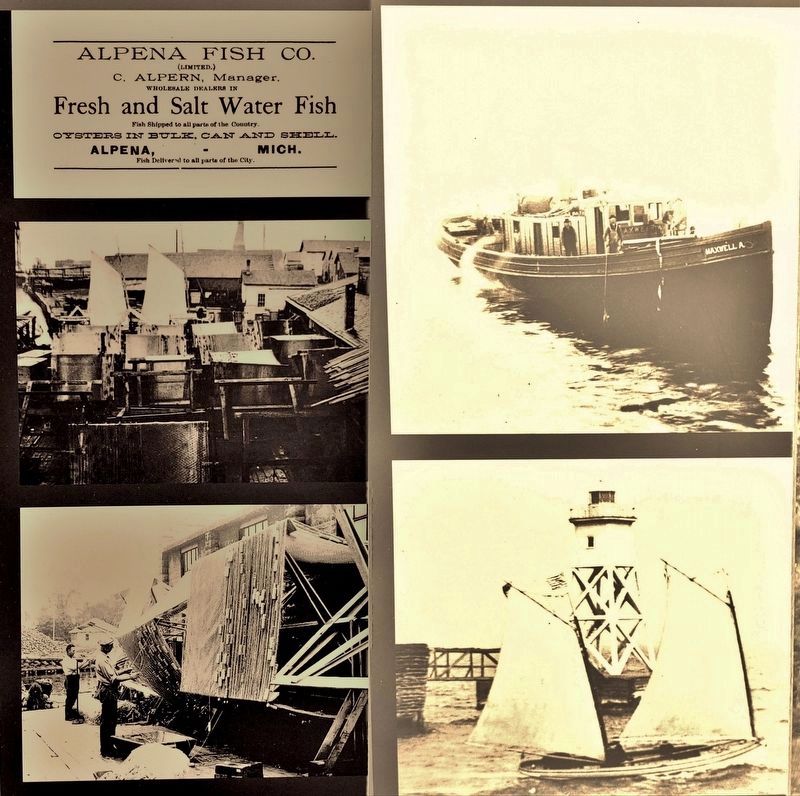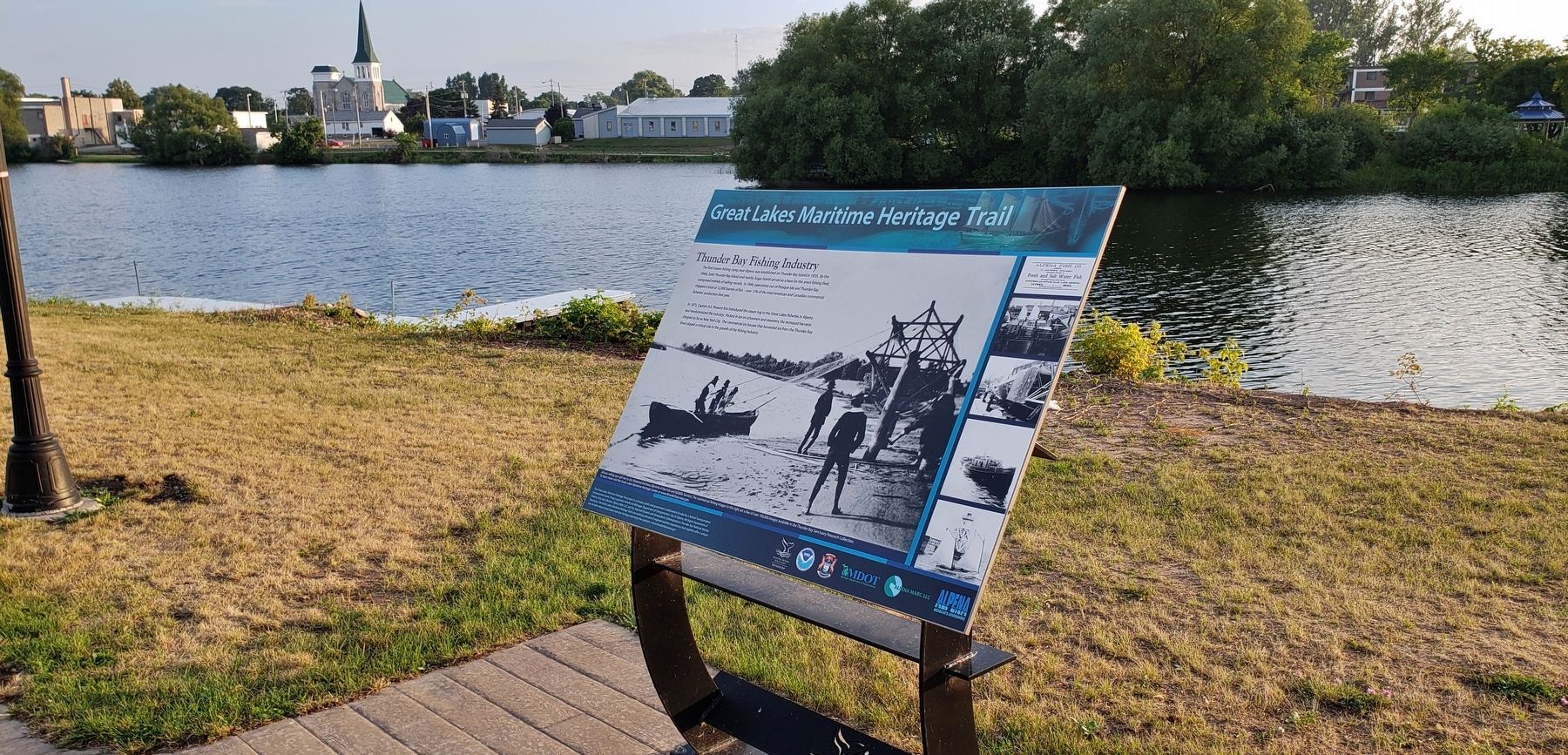Alpena in Alpena County, Michigan — The American Midwest (Great Lakes)
Thunder Bay Fishing Industry
In 1875, Captain A.E. Persons first introduced the steam tug to the Great Lakes fisheries in Alpena and revolutionized the industry. Packed in ice on schooners and steamers, the increased harvests shipped as far as New York City. The commercial ice houses that harvested ice from the Thunder Bay River played a critical role in the growth of the fishing industry.
Erected by Great Lakes Maritime Heritage Trail.
Topics. This historical marker is listed in these topic lists: Animals • Industry & Commerce • Waterways & Vessels. A significant historical year for this entry is 1835.
Location. 45° 4.125′ N, 83° 26.129′ W. Marker is in Alpena, Michigan, in Alpena County. Marker can be reached from West Fletcher Street west of Cedar Street, on the left when traveling north. Marker is located along Alpena's Bi-Path, behind the Great Lakes Maritime Heritage Center, overlooking the Thunder Bay River. Touch for map. Marker is at or near this postal address: 500 West Fletcher Street, Alpena MI 49707, United States of America. Touch for directions.
Other nearby markers. At least 8 other markers are within walking distance of this marker. International Shipmaster's Association (within shouting distance of this marker); The Loss of the Pewabic (about 400 feet away, measured in a direct line); Propellers (about 400 feet away); Thunder Bay River Lumber Industry (about 500 feet away); Rising from the Ashes: The New Orleans (about 500 feet away); Research Vessels (about 500 feet away); Steaming Open the Frontier (about 600 feet away); Bigger, Stronger, Faster (approx. 0.2 miles away). Touch for a list and map of all markers in Alpena.
More about this marker. Marker is a large composite plaque, mounted waist-high on a metal supporting rack.
Also see . . .
1. Thunder Bay Fishing Industry History. W.F. Cullings, who is believed to be the first white resident of the Thunder Bay region, began a fishing camp on Thunder Bay Island in 1835. Some evidence suggests that Cullings was an employee of the American Fur Company and had established himself on the island on the company's account rather than his own, but this is unclear. Later, a few buildings were constructed on the present site of the City of Alpena by hunters from Mackinaw; Walter Scott erected a fishhouse and trading post near these buildings. (Submitted on August 19, 2018, by Cosmos Mariner of Cape Canaveral, Florida.)
2. Thunder Bay Island History. During the 1830s and 1840s, a commodity market in barrelled fish arose on Lake Huron. The fresh-caught fish was quickly brought to a fishing station after being caught, and salted for preservation. A fishing station sprouted on Thunder Bay Island during this period, and an 1846 gazetteer counted 160 settlers on the island and 31 fishing boats that called the island their home port. Most of these fishing boats were small Mackinaw boats. The total catch is said to have been 12,000 barrels of fish per year. The Thunder Bay Island fishing station supported a small general store. After a few decades, however, the yield of Lake Huron fish declined. The Thunder Bay Island fishing station became a ghost town. (Submitted on August 19, 2018, by Cosmos Mariner of Cape Canaveral, Florida.)
Credits. This page was last revised on August 21, 2018. It was originally submitted on August 16, 2018, by Cosmos Mariner of Cape Canaveral, Florida. This page has been viewed 254 times since then and 37 times this year. Photos: 1, 2, 3, 4. submitted on August 19, 2018, by Cosmos Mariner of Cape Canaveral, Florida. • Bill Pfingsten was the editor who published this page.



